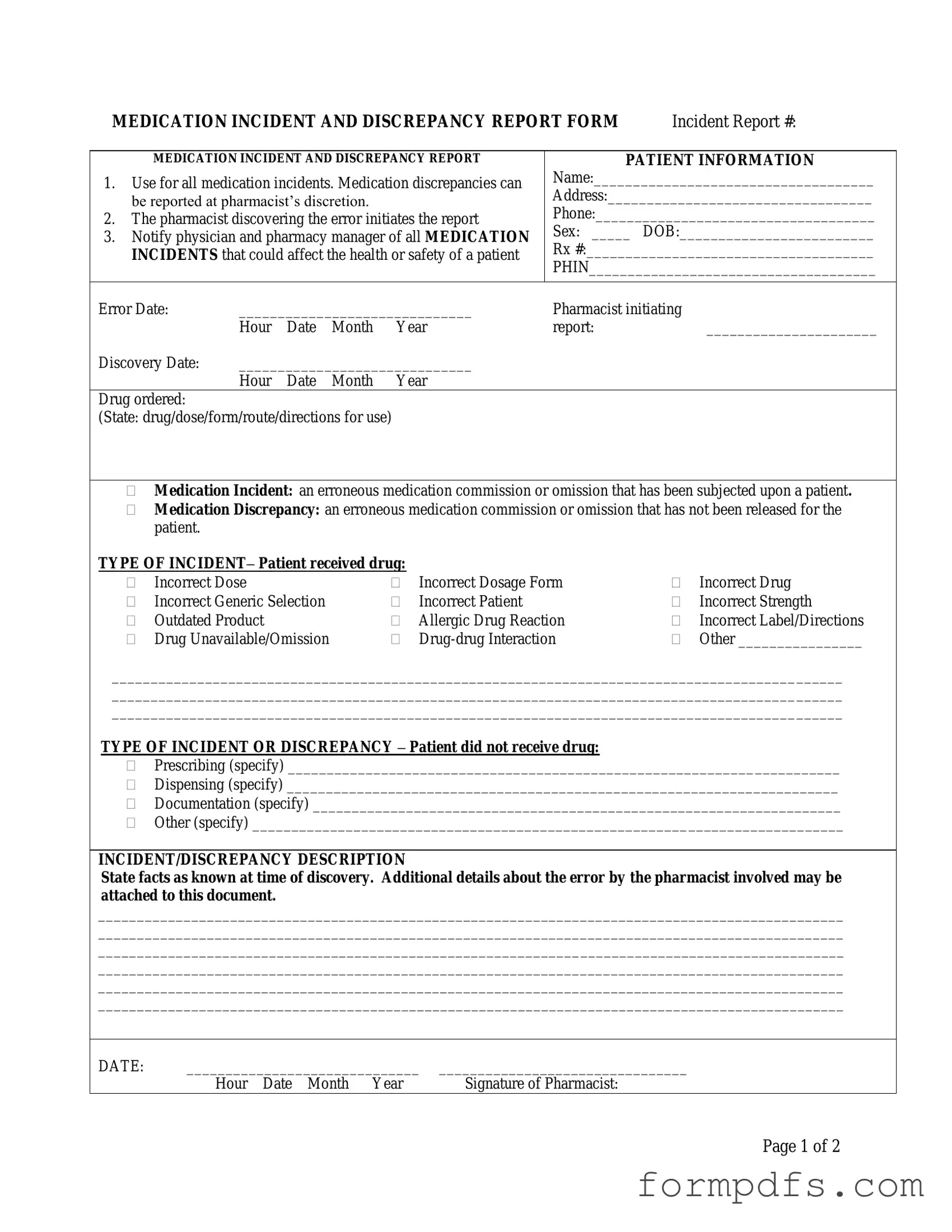What is the purpose of the Medication Error form?
The Medication Error form serves as a tool for documenting medication incidents and discrepancies. It allows pharmacists to report errors that could affect patient health or safety, ensuring that such incidents are properly tracked and addressed. The form can also be used to report discrepancies at the pharmacist's discretion, helping to improve overall medication safety.
Who is responsible for initiating the report?
The pharmacist who discovers the medication error is responsible for initiating the report. This ensures that the person with the most knowledge about the incident provides the necessary details for accurate documentation and follow-up.
What information is required on the form?
The form requires several key pieces of information, including patient details (such as name, address, and phone number), the error date, the drug involved, and a description of the incident. Additionally, it asks for contributing factors, notifications made to the patient and physician, and the severity of the incident. This comprehensive information aids in understanding the context of the error and facilitates appropriate responses.
What types of incidents can be reported using this form?
Various types of incidents can be reported, including incorrect doses, incorrect drugs, outdated products, and allergic drug reactions. The form also allows for reporting discrepancies where a patient did not receive the prescribed medication, such as issues with prescribing, dispensing, or documentation. Each category helps to clarify the nature of the error and its potential impact on patient care.
What steps should be taken after completing the form?
After completing the form, the pharmacist should notify the patient and the physician about the incident. This notification is crucial for patient safety and ensures that appropriate medical interventions can be made if necessary. The pharmacist should also follow up on the investigation outcomes, documenting any actions taken to resolve the issue and prevent future occurrences.
How does the form address contributing factors to medication errors?
The form includes a section for the pharmacist to identify contributing factors that may have led to the medication error. Options such as improper patient identification, misinterpretation of drug orders, and lack of patient counseling are provided. By analyzing these factors, pharmacies can implement changes to improve safety and reduce the likelihood of future errors.
What happens if a medication error occurs?
If a medication error occurs, it is vital to act quickly. The pharmacist must complete the Medication Error form, notify the relevant parties, and assess the severity of the incident. Depending on the outcome of the investigation, steps may be taken to educate staff, change policies, or improve systems to prevent similar errors in the future. The ultimate goal is to enhance patient safety and care quality.
